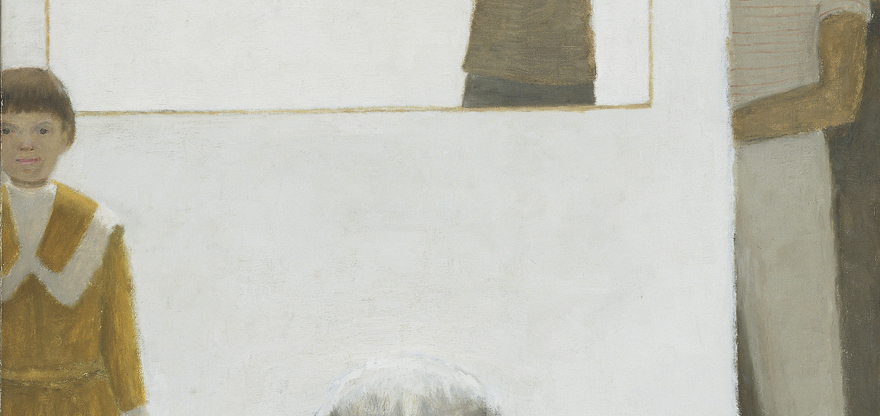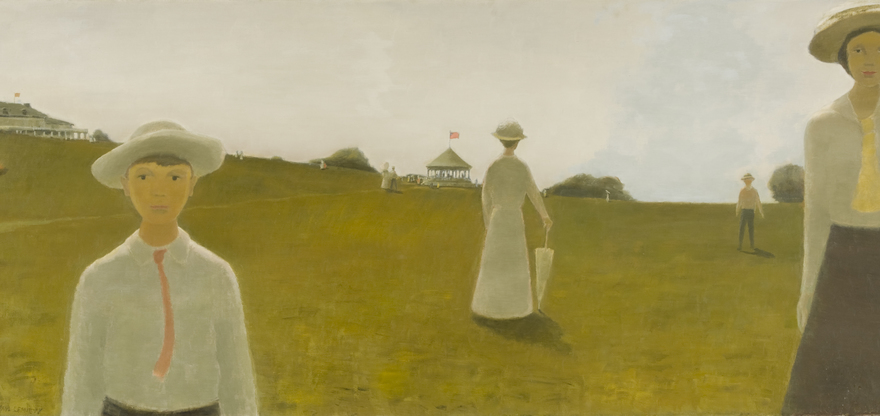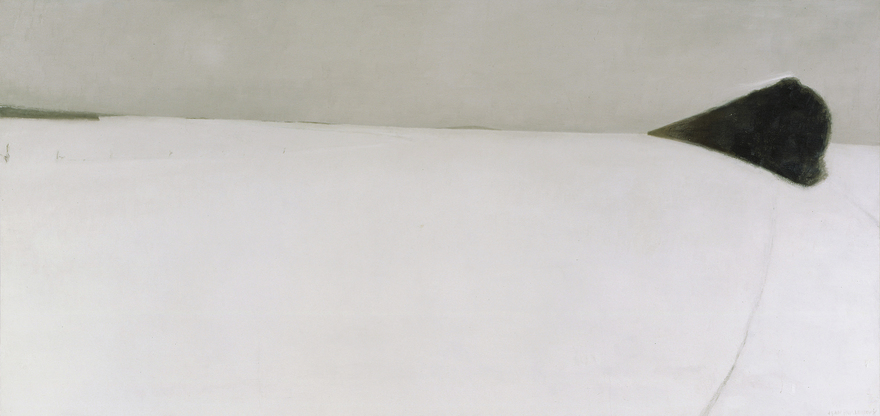Jean Paul Lemieux, who travelled paths to the sidelines of the major artistic currents, welcomes us into his universe, at once playful and serene, but also marked by doubt and anguish. A world of space and silence.
This exposition plunges visitors into the world of a painter who always followed his own path. From narrative painting with shades of regionalism in his early years, Jean Paul Lemieux gradually moved towards existential and universal concerns: “The heart laid bare, without fail, in its irrefutable manifestness,” Anne Hébert said. The early 1940s saw an almost caricatural primitivism influenced by the naïve artists of the Charlevoix region. The mature period began in the 1950s with an excursion into formal schematization. The figures in Jean Paul Lemieux’s work, particularly in his so-called classical period, seem to move in a word of “silence and space.” Using conventional painting technique and nostalgically drawing on his immediate surroundings, Lemieux was able to extract his painting from a haunting reality to achieve in its place a soothingly pleasant dream-like state. Over time, this dream-like quality attained, by the end of his life, a cosmic dimension that was not without a sense of anguish, changing his approach to painting.
Chronology
1904 Jean Paul Lemieux is born on 18 November in Québec City.
1925 Lemieux apprentices in the studio of Marc-Aurèle de Foy Suzor-Coté in Montréal.
1925-1934 During this period, Lemieux is admitted to the École des beaux-arts de Montréal (ÉBAM), where he wins several awards and distinctions. He attends life model classes at the studio of Edwin Holgate and sojourns in Europe from 1929 to 1931.
1935-1937 Lemieux is named professor of the drawing course at the École du meuble in Montréal.
1937 On 12 June, Jean Paul Lemieux marries Madeleine Des Rosiers, whom he met at the ÉBAM. He then teaches at the École des beaux-arts de Québec until 1965.
1951 Lemieux wins first prize in the Concours artistiques de la province de Québec for his painting Les Ursulines (The Ursulines).
1954-1955 Thanks to a grant from the Royal Society of Canada, Lemieux spends a sabbatical year in France.
1958 Lemieux is chosen to represent Canada at the Brussels World’s Fair. Exhibitions of his work are held in Pittsburgh, Paris and Mexico City.
1960 Lemieux’s work is included in the Canadian section of the Venice Biennale.
1965 This year is a turning point for Lemieux as he devotes himself entirely to painting.
1966-1985 A memorable period, during which Lemieux is elected to the Royal Canadian Academy of Arts in 1966, receives the Canada Council Medal in 1967 and is named Companion of the Order of Canada in 1968. He goes on to receive the Philippe Hébert award from the Société Saint-Jean-Baptiste in 1971 and the Molson Prize from the Canada Council for the Arts in 1973. He is also granted honorary degrees from Université Laval (1969), Bishop’s University (1970), the Université de Montréal (1980) and Concordia University (1985).
1974-1975 The Québec Ministry of Cultural Affairs organizes an exhibition of his work in Moscow, Leningrad, Prague and Paris.
1990 Jean Paul Lemieux dies on 7 December at the age of 86 in Québec City.






Give us your feedback